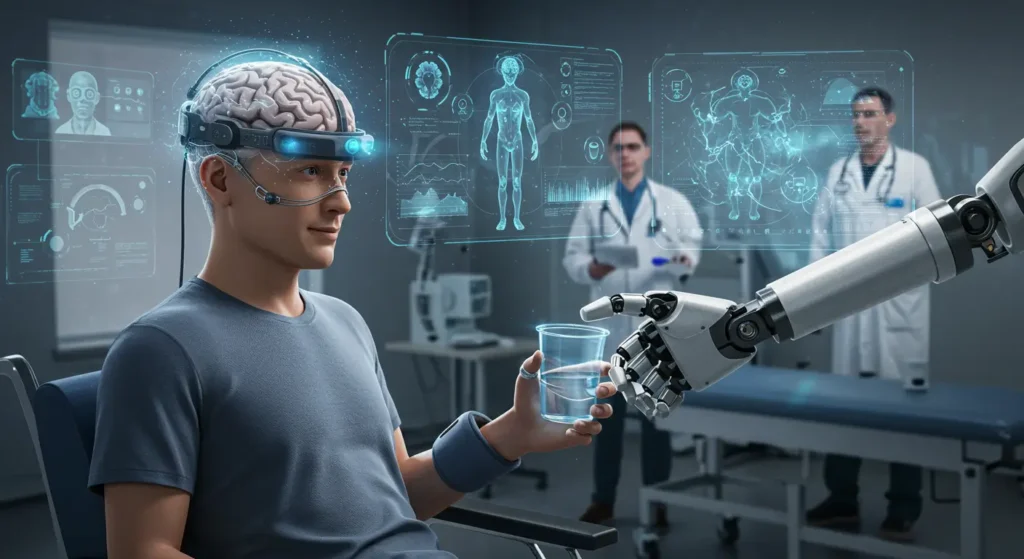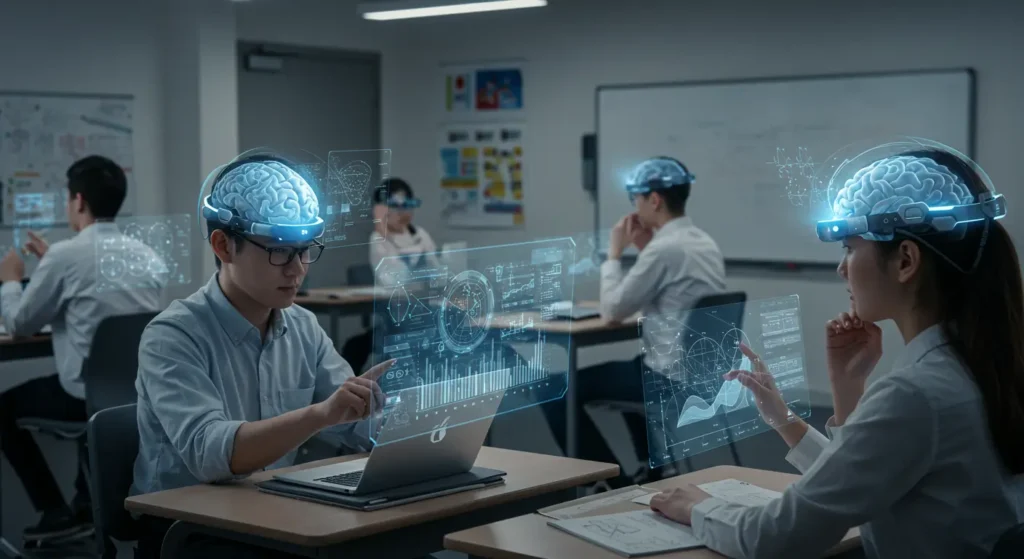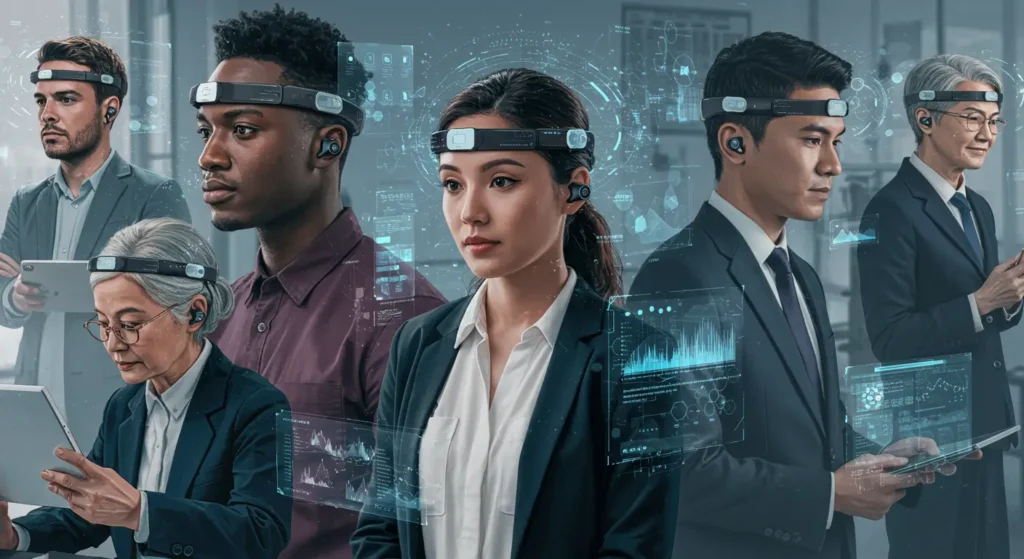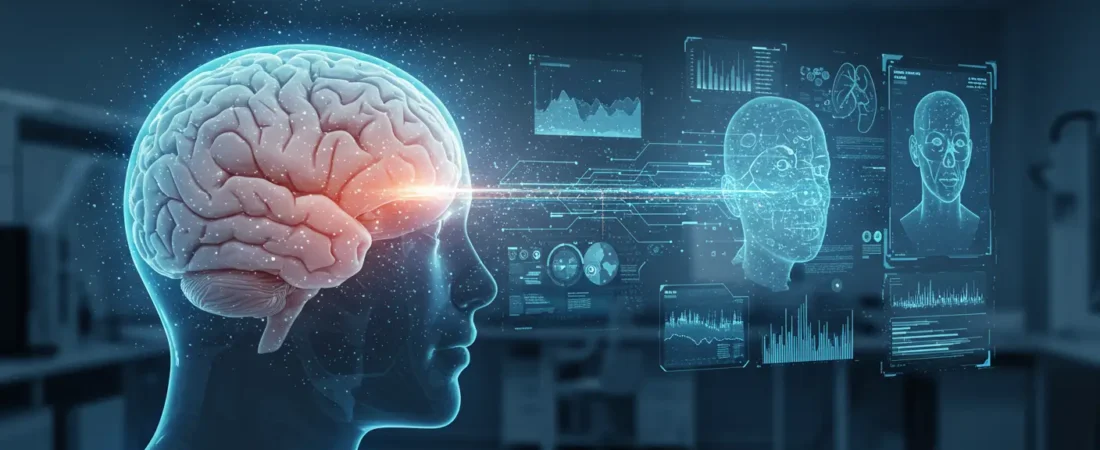Introduction to Brain Computer Interface: Unlocking the Future of Human Potential
A brain computer interface (BCI) represents one of the most revolutionary frontiers in modern science and technology. This innovation creates a direct communication channel between the human brain and external digital devices, bypassing traditional input methods such as keyboards, touchscreens, or voice commands. Rooted in neuroscience and cognitive science, and enhanced by the rapid progress of neurotechnology, BCIs aim to unlock new dimensions of human potential.
From enabling paralyzed patients to move robotic limbs, to enhancing cognitive performance in healthy individuals, to bold visions like Elon Musk’s Neuralink, brain computer interfaces are reshaping the limits of what it means to be human. The implications extend far beyond medicine: education, communication, entertainment, and even our philosophical understanding of consciousness may all be transformed by this technology.
Brain Computer Interface and the Future of Human-Machine Communication

The brain computer interface is not just another gadget it is a gateway into an entirely new paradigm of human-machine communication. By decoding neural signals directly, BCIs allow humans to control computers, prosthetics, and even smart devices using only their thoughts. This concept, once confined to science fiction, is becoming a scientific reality, supported by decades of research in neuroscience and accelerated by advances in AI and machine learning.
The Evolution of Brain Machine Interfaces
The journey of the brain machine interface began in the 1970s, when scientists first discovered that electrical activity in the brain could be measured and used to control external devices. Initially, this research was aimed at medical rehabilitation, particularly helping patients with spinal cord injuries regain mobility. Over time, breakthroughs in signal processing, neuroimaging, and computational modeling allowed researchers to decode brain activity with increasing precision.
In recent years, non-invasive BCIs using EEG (electroencephalography) have become more accessible. Devices like headsets can detect brainwave patterns and translate them into commands for video games, smart home devices, or meditation apps. Meanwhile, invasive BCIs like those pioneered by Neuralink promise far greater precision by implanting electrodes directly into brain tissue.
The National Institute of Health (NIH) highlights this potential: “Brain-computer interfaces have the potential to restore function to individuals with paralysis and to enhance communication for those unable to speak.” (NIH.gov)
The shift from experimental labs to consumer applications suggests that brain machine interfaces will become mainstream in the coming decades. Imagine a future where writing an email requires only thought, or where smart homes adjust automatically to your mental state.
Neurotechnology and Brain Computer Interface: The Rise of Cognitive Enhancement

While medical rehabilitation remains the most urgent application, neurotechnology is increasingly exploring how brain computer interfaces can enhance healthy human cognition. This raises the question: can BCIs make us smarter, more focused, and more creative?
From Therapy to Enhancement
Originally, BCIs were designed to help patients with conditions like ALS, epilepsy, or paralysis. However, researchers are now testing whether the same technology can amplify normal cognitive functions. Imagine wearing a BCI headset during a lecture, and instead of taking notes, the information is stored directly in your memory system. Or picture a stock trader using a brain machine interface to analyze complex data streams at a speed no ordinary human could achieve.
Cognitive enhancement through BCIs could revolutionize education, workplace efficiency, and even artistic creativity. For instance, musicians could compose symphonies by “thinking” melodies, and writers might dictate entire novels directly from their neural activity.
However, this transition from therapy to enhancement raises profound ethical questions. Should neurotechnology be available to everyone, or only to those who can afford it? If BCIs create a class of enhanced humans, how will that reshape society?
The World Economic Forum (WEF) emphasizes this challenge: “Ethical concerns about BCIs are as important as their technological breakthroughs, as they raise issues of privacy, consent, and inequality.” (WEForum.org)
Ethical Considerations in Cognitive Science
We cannot ignore the ethics of BCIs. If systems record thought patterns, who owns that data? Could governments or corporations misuse it for surveillance? In cognitive science, the line between augmentation and manipulation is thin. BCIs could empower individuals or they could become tools of control.
Elon Musk Neuralink and the Commercialization of Brain Computer Interfaces

Among the companies pushing BCI innovation, Elon Musk Neuralink is the most famous. Founded in 2016, Neuralink aims to merge humans with AI by creating implantable devices capable of reading and writing brain signals. Neuralink’s initial focus is on treating neurological disorders, but Musk’s long-term vision goes much further: direct symbiosis with artificial intelligence.
Neuralink’s Vision
Musk often warns that AI could surpass human intelligence. His solution is not to stop AI but to integrate with it. Neuralink’s brain machine interface chips, implanted via robotic surgery, are designed to make this possible. In addition, these chips could allow telepathic communication, instant access to the internet, or even memory upgrades.
Current Progress and Challenges
As of now, Neuralink has conducted animal trials and received FDA approval for limited human trials. While progress is promising, challenges remain. Safety is the top concern: brain surgery is invasive, and the long-term effects of implants are unknown. Furthermore, widespread adoption depends on proving the technology’s reliability and ensuring it doesn’t create new health risks.
Nature Neuroscience underscores this uncertainty: “The potential is immense, but so are the ethical and safety hurdles that must be overcome.” (Nature.com)
Neuroscience, Accessibility, and the Democratization of BCIs

Neuroscience continues to advance, but one crucial challenge is accessibility. Will BCIs be tools for everyone, or only for elites? If democratized, BCIs could improve global healthcare and education. If not, they risk deepening social inequality.
Affordable Solutions in Neurotechnology
To democratize access, companies are exploring affordable, non-invasive BCIs. Companies already market wearable EEG devices to consumers for stress reduction, meditation, or brain training. If mass-produced, these devices could become as common as smartphones.
Imagine a world where people use BCIs to monitor mental health, optimize study habits, or collaborate in virtual workspaces simply by connecting their thoughts. Accessibility in neurotechnology ensures that BCIs don’t just serve a wealthy minority but uplift society as a whole.
The Role of Cognitive Science in Adoption
The success of BCIs also depends on cognitive science, which studies how the brain adapts to new tools. Will the human mind accept thought-to-text typing as naturally as hand-to-keyboard typing? Early research suggests yes but the transition may take decades of cultural adaptation.
MIT Technology Review emphasizes this balance: “Human cognition is adaptive, but introducing artificial pathways into the brain requires caution and thoughtful design.” (MIT.edu)
Unlock the Future of Human Potential
The brain computer interface is no longer a futuristic dream. From restoring mobility to enhancing intelligence, from Neuralink’s implants to affordable consumer wearables, BCIs are transforming humanity’s relationship with technology. This revolution touches neuroscience, neurotechnology, cognitive science, and brain machine interfaces reshaping how we live, work, and think.
👉 Subscribe to our newsletter and stay ahead with the latest updates on brain computer interfaces, neuroscience breakthroughs, and the future of human-AI integration.



